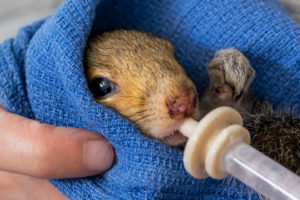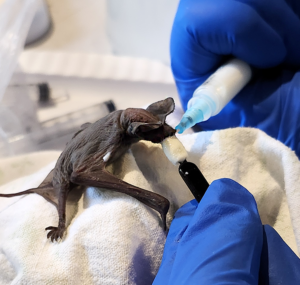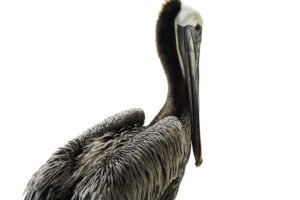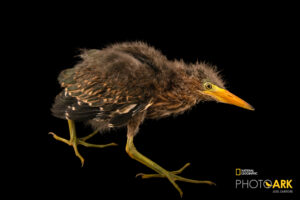Spring is here and this is the time wild birds and mammals have their babies. The following are some tips to help you help our local wildlife.
To protect nesting birds in trees, do not trim or cut trees during the months of April through August. The domestic cat is the number one killer of songbirds as well as other small animals. The Bird Conservancy estimates that hundreds of millions of wild baby and adult birds are killed by domestic cats each year in America. Secure outdoor cat enclosures or indoor housing of domestic cats greatly reduces wildlife casualties, as well as helps to prevent risks to cats posed by allowing them to roam. If however, you can’t keep your cat(s) contained, keep their claws trimmed and use a Cat Bib on them when they’re outside to stop them from catching birds. A recent study published in the journal Biological Conservation found that fastening bibs to kitty collars can reduce the number of birds they kill by up to 72%. Much more effective than cat bells. Even our native reptiles,frogs, and mammals all fare better when felines are donned with the Cat Bib. (You can buy a cat bib online any where from $9.95 – $11.95 depending on the size of your cat at www.catgoods.com.).
If you find a non-feathered young bird out of its nest, keep the baby safe and warm and call Native Animal Rescue (NAR) for instructions.If you need to bring a baby bird to NAR, place a warmed cloth in the bottom of a paper bag or box in which you have made holes for air. If you don’t have these things, have a friend keep the bird warm in their hands while bringing it to NAR. Keeping baby birds warm is of vital importance in order to insure survival.If you see a feathered non-flying young bird on the ground, observe it from a distance. You may find a wary parent nearby. Many species of birds give their babies “ground training” before they can fly. If a bird parent is seen within an hour, and there are no cats around, leave the young bird alone. Otherwise, call NAR for further instructions.If you find a baby bird and it is uninjured and seems healthy, try to put it back in it’s nest. . The parents will not reject their baby just because you’ve touched it. Finding a baby hummingbird on the ground is always an emergency. They die quickly from cold, heat or starvation. Don’t attempt to feed them! Be incredibly gentle. Pick up any debris, nesting material or other substance it’s sitting on. Their delicate toes automatically lock when perched and are sometimes accidentally torn off when they’re picked up. If it’s well-feathered, put it on a branch and observe for a parent above. If it’s not well-feathered, put it in a bag or box as described above and call NAR immediately.Only rescue baby mammals when you are sure the mother is not coming back or you know it’s injured or in danger. Mothers of many species such as deer, rabbits, squirrels and woodrats leave their babies for several hours to forage before returning to nurse them. If you’re sure the baby needs rescuing, provide warmth and take it immediately to NAR. If you are not certain the baby needs rescuing call NAR for advice.
Many mammals nest under houses or in attics. If you hear squeaking or other noises coming from these areas, check for babies. Then call NAR to assist you in handling the situation. Never feed baby birds or baby mammals. That is the job of the experienced wildlife rehabilitators at NAR. Each bird and mammal have dietary needs unique to their species. Native Animal Rescue is licensed to rehabilitate orphaned and injured wildlife until they can be released back into the wild.
For information on baby birds and baby mammals, call NAR’s 24 hour hotline at 462-0726 or visit www.nativeanimalrescue.org
Written by: Molly Richardson
Rehabilitator/Board Member Native Animal Rescue




